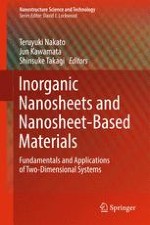2017 | OriginalPaper | Buchkapitel
22. Biological Materials
verfasst von : Challa Vijaya Kumar
Erschienen in: Inorganic Nanosheets and Nanosheet-Based Materials
Verlag: Springer Japan
Aktivieren Sie unsere intelligente Suche, um passende Fachinhalte oder Patente zu finden.
Wählen Sie Textabschnitte aus um mit Künstlicher Intelligenz passenden Patente zu finden. powered by
Markieren Sie Textabschnitte, um KI-gestützt weitere passende Inhalte zu finden. powered by
